|
|
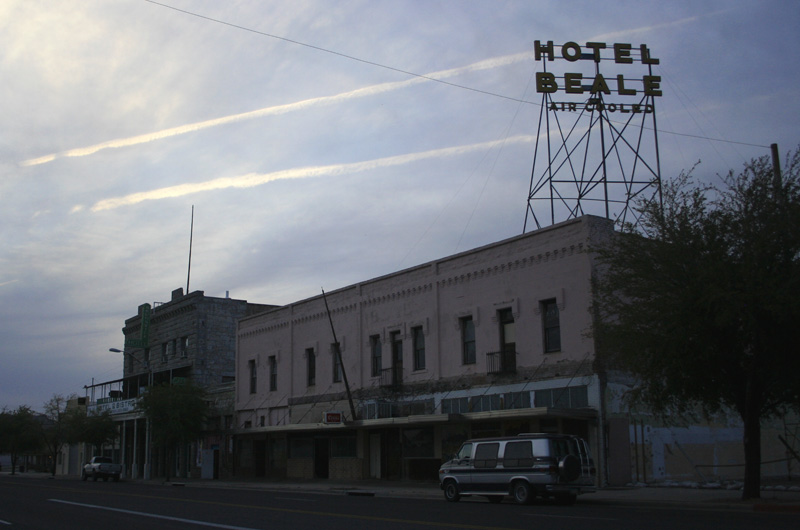
| Air Cooled | | In the 1930s, the Hotel Beale was crown jewel of Kingman's business district and one of the first hotels in Arizona with air conditioning. The hotel was named for Edward Beale an early Navy officer and scout who established the Beale Wagon Road across northern Arizona (along the current route of I-40). |
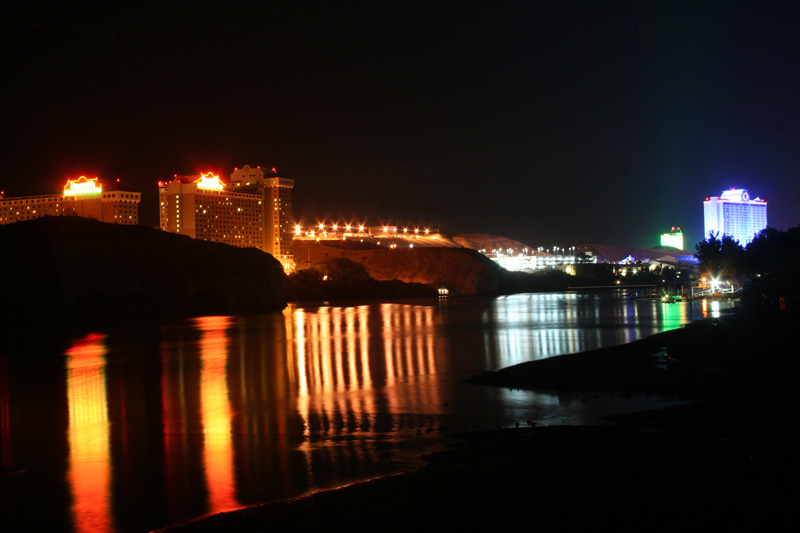
| Lights of Laughlin | | Laughlin is the closest town in Nevada to Arizona and thus a popular gambling and resort spot for folks from Phoenix who don't want to spend the extra money or drive the extra distance to reach Las Vegas. The Colorado River separates Laughlin from Bullhead City, Arizona. After the sun sets, it is easy to tell which side of the river is Arizona and which is Nevada. |
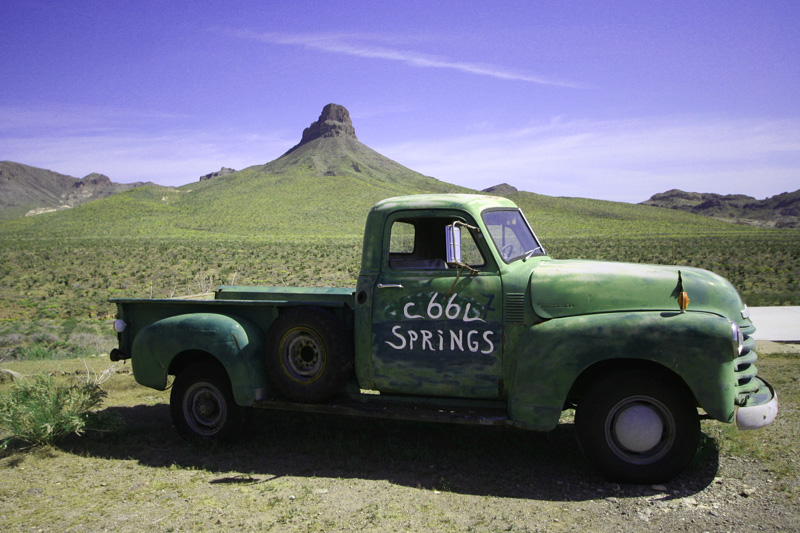
| Cool Truck | | One of the best surviving stretches of old historic Route 66 winds through the mining camps of the Black Mountains west of Kingman. Cool Springs was one of many little mom-n-pop roadside stops along Route 66 during its golden age in the 1930s and 40s. |
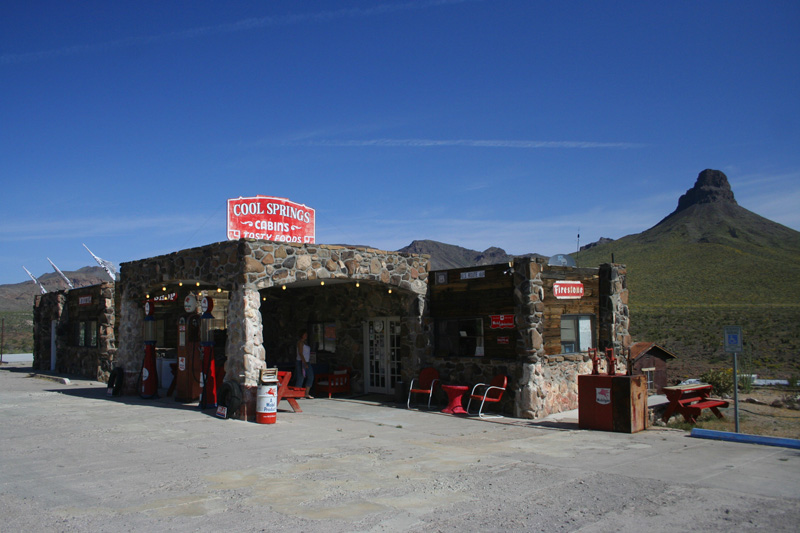
| Last Gas for 30 Miles | | Today the old road is popular with motorcyclists, tourists and Route 66 buffs leading to opening (or re-opening) of many Route 66 themed shops and cafes. For many years, the Cool Springs store and gas station was a ruin consisting of little more than foundations and the stone pillars holding roof over the drive-through area. |

| In Memory | | One of the greatest things about this little stretch of old 66 is the number of small off-beat, unusual, and personal little monuments, relics and landmarks that have survived along the road despite its recent return to popularity. This little monument on the side of a hill was erected in memory of Floyd Spidell who ran the Cool Springs gas station and cabins in the 1940s and 50s. |

| Shaffer's Fish Bowl Spring | | A flight of rock stairs roughly carved into a cliff beside the road leads to one of my favorite little Arizona spots. Twenty feet up the cliff - in the middle of as dry and barren a patch of Arizona as you'll find - is a tiny natural seep spring whose trickle of water has been captured in a small bathtub-size basin. And it even has a small school of goldfish living in it. There is no sign or marker along the road and the only clue to its history is a tiny metal plaque above the basin reading: Shaffer Fish Bowl Spring. |
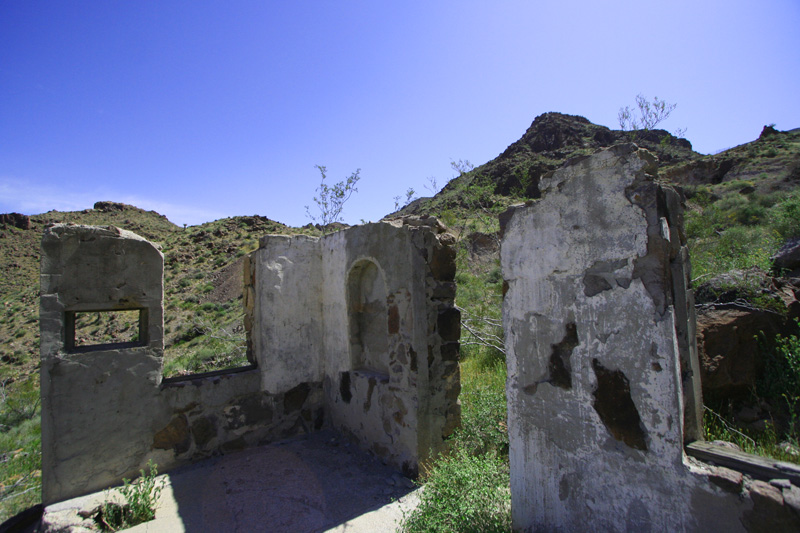
| Gold Road Gone | | In the early 1900s, Gold Road was a sprawling mining camp that lined both sides of what would become Route 66 for the better part of a mile. Even today, this stretch of road has one of the highest concentrations of old ruins, foundations and mining rubble in the southwest. |
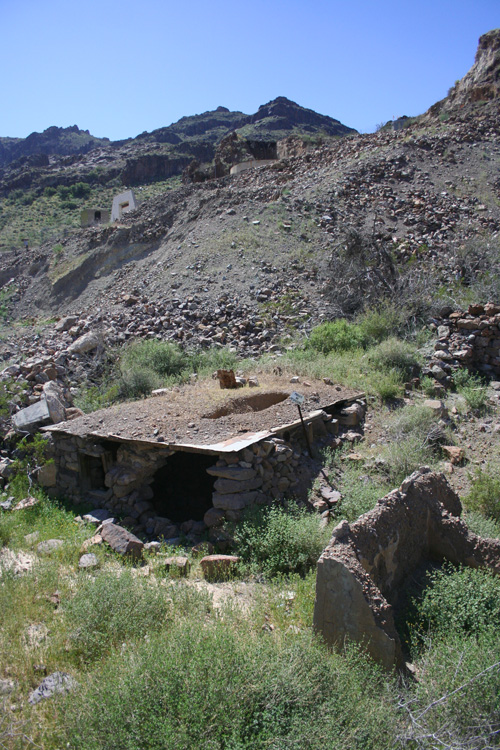
| Home, Home in the Ground | | Building a 'dug-out' was a common housing option for many miners in the old west. They were easier to build than a free-standing building and the provided better insulation against the Arizona heat. |
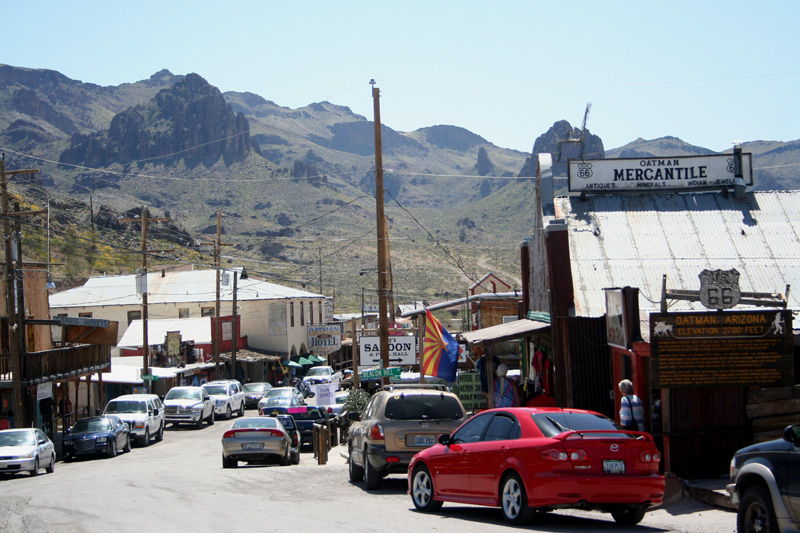
| Downtown Oatman | | Once nearly abandoned, the old gold camp of Oatman has seen a major rebirth over the last couple decades as a popular tourist attraction and now it can be hard to find a place to park on weekends. Although hard evidence is sparse, Oatman is said to have been named for Olive Oatman, a girl who was held captive by the Yavapai Indians in the 1850s after her family was massacred along the Gila River. |

| How the West Was Filmed | | This hundred year old building was originally built as a bank and drugstore, but enjoyed a brief spot of fame when it was turned into the 'Gold City Hotel' for the filming of 'How the West was Won' (Oatman was the setting for the train robbery scene near the end). |
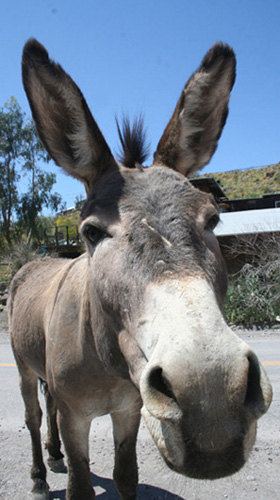 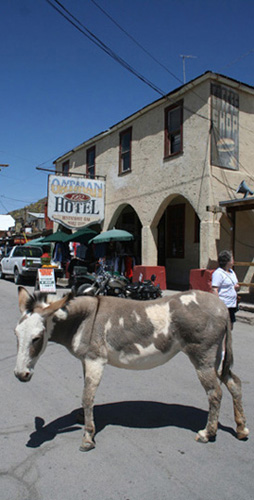 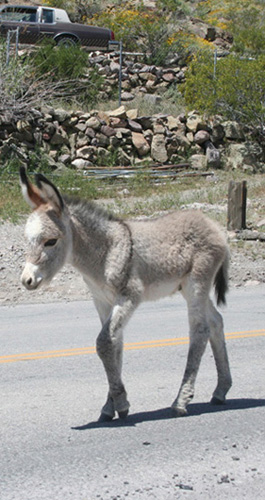
| Oatman's Most Famous Citizens | | When the mines closed in the 1940s, the burros used to haul ore were set free in the desert where they have survived in semi-feral bands ever since. Many of them have learned that Oatman's tourists are a good source of handouts and ear scratches and so there are always a few roaming the streets or grazing along the highway nearby. |
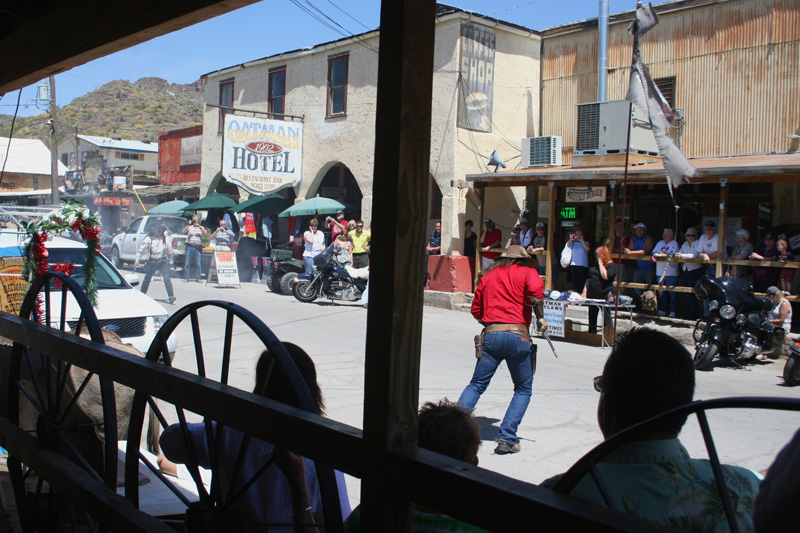
| Shot on the Streets of Oatman | | Like a mini version of Tombstone, Oatman is a mix of authentic historic structures and corny low-budget tourist traps with names like Jackass Ron's Collectibles, Olive Oatman's Ice Cream Saloon and Fast Fanny's Place. And like Tombstone, there are daily shoot-outs in the street. More six-shooter slapstick than dramatic recreation, tourist donations from the performances go to the Shriner's Childrens Hospitals. |

| Gold on them thar Hills | | In a little valley to the west of Oatman sits a lonely little collection of foundations and stone ruins whose layout suggests they were once a road-side set of tourist cabins back in the day. A small spring supports a tiny clump of cattails and the surrounding hills were coated with brittlebush in full bloom. In fact, the flowers were so dense and full of pollen that after walking around the area for 20 minutes, my pants legs were so dusted in yellow that it looked like I'd been caught in a mustard explosion. |
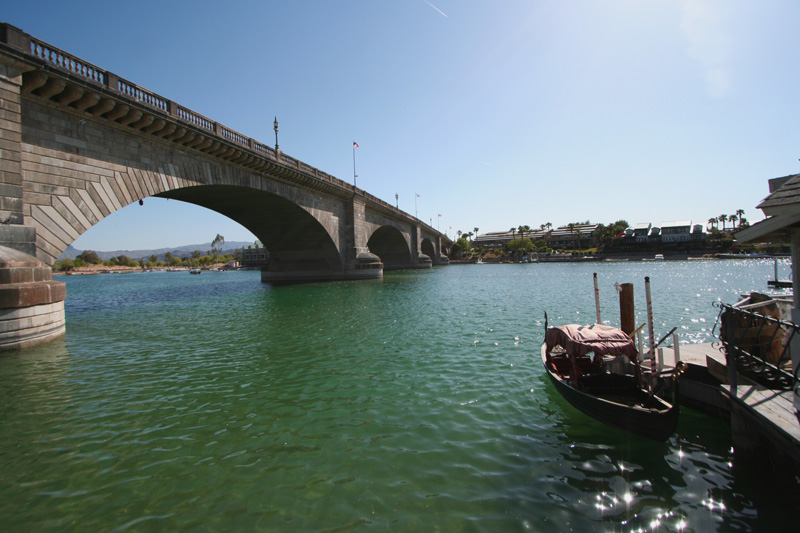
| London Bridge is Building Up | | It has been years since I had been to London Bridge and I was surprised by the number of up-scale restaurants, resorts and condos that cover the area (and saddened by the removal of the old English-style hedge row maze that used to be at one end of the bridge). This bridge really did cross the Themes River in London until it was sold to oilman turned developer Robert McCulloch in 1968 and moved (brick by brick) to Lake Havasu. |

| Last Camp of Hi Jolly | | In the 1850s, the United States Army formed an experimental 'Camel Corps' led by Edward Beale to see if camels would work better in the southwest deserts than horses or mules. In addition to purchasing a herd of camels, they also hired a Greek-Syrian camel driver named 'Hadji Ali' (who locals shortened to 'Hi Jolly') to help train the army packers. The camel corps was not successful, but Hi Jolly stayed in Arizona and eventually settled in Quartzite as a prospector and businessman. |
|
|
|

